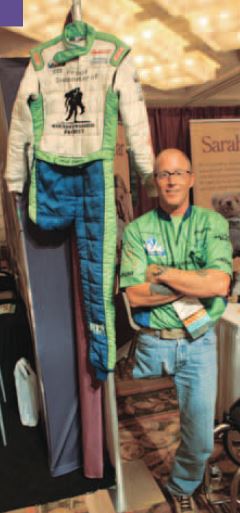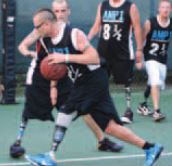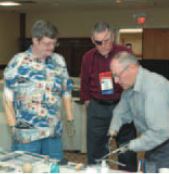Volume 20, Issue 6 November/December 2010 | Download PDF
by Nicholas LaRaia, PT, DPT, NCS
Ask The Physical Therapist

Losing a limb for whatever reason is a life-changing event. The emotional and psychological effects can be very complex and may last a lifetime.
Most will partly deal with the loss by attempting to replace the limb with an artificial one to regain function and/or the appearance of being whole or normal again. But, there are definitely some long-term physical effects of amputation, whether or not a prosthesis is used. Prosthetic use is not for everyone, and upper-limb amputees often are more likely to choose not to use a prosthesis than lower-limb amputees.
Prosthetic users will eventually find physical effects related to the method of suspending the prosthesis on the residual limb. Despite today’s high-tech equipment, we still have some really low-tech problems. Increased skin temperatures of the residual limb, along with sweating, heat rash, blisters, contact dermatitis, abrasions and painful ingrown hairs may occur from the environment within the liners. Skin issues can progress to very dangerous conditions such as infection if not addressed. The warm, moist environment inside the liner is an ideal incubator for bacteria. This is true for both upper- and lower-limb amputees. Upper-limb amputees may also get blisters, abrasions and rashes from the harness used to attach and operate mechanical prostheses. The weight of the prosthesis as it hangs from the residual limb causes different skin problems. For upper-limb amputees, the prosthesis may hang unsupported most of the time; for lower-limb amputees, this occurs when swinging the prosthesis through to take the next step while walking. This creates a slight vacuum or suction on the end of the limb, especially with pin and shuttle lock liners. Problems are more common with lower-limb prostheses, but over time this suction can cause chronic swelling, a bulbous end on the limb, dark red discoloration, and in extreme cases hyperplasia or neoplasia (an aggressive overgrowth of abnormal skin tissue) at the end of the limb.

are well-known to prosthetic users. The residual limb is susceptible to deep tissue injuries from the forces it is subjected to inside the prosthesis. The intact limb of lower-limb amputees is much more likely to develop joint problems such as arthritis, presumably from the increased forces and increased time in weight-bearing, as amputees habitually load the intact limb more. Upper-limb amputees are not exempt from the problems that the strain of using a prosthesis causes. Cumulative trauma disorder or overuse injuries, arthritis, shoulder pain and back pain are very common. Strain in the residual limb from repeated use and the changes in limb and muscle lengths from the amputation surgery cause fatigue, pain and joint and tendon problems.


Not using a prosthesis after amputation avoids a great deal of discomfort from the prosthesis, but has other effects. Without the benefit of a prosthesis, upper-limb amputees rely much more heavily on their intact limb. With this comes the problems also previously mentioned with upper-limb prosthetic use, but the heavy reliance on the intact limb leads to overuse, strain and shoulder and back pain on the intact side. Some studies have found 60 percent of upper-limb amputees without a prosthesis have problems including tendinitis, bursi-tis and aggravation of arthritic conditions. Lower-limb amputees without a prosthesis are much more limited in their activity levels. With reduced activity come the effects of weight gain, increased difficulty in controlling diabetes and hypertension, and worsening of vascular and heart disease. Wheelchair use is very common, and with long-term use the incidence of shoulder tendinitis, bursitis and arthritis is increased. Chronic lower-leg edema from dependent positioning can lead to more problems with circulation and venous stasis ulcers. Little use of the intact limb and of trunk musculature causes weakness and muscle atrophy. Sitting most of the day will lead to hip flexion contractures and knee contractures, which can be very painful when performing transfers and position changes on a bed.
Amputation can bring on a lot of long-term physical effects, whether using a prosthesis or not. The decision to use a prosthesis is unique to each individual and should be weighed carefully. Either way, an amputee has to make a concerted effort to avoid a host of physical and health problems related to the reduction in activity that inevitably follows. A regular exercise pro-gram with an emphasis on cardiovascular fitness is very important, and strengthening of the trunk and limb muscles can help avoid or minimize joint, muscle and tendon problems.

